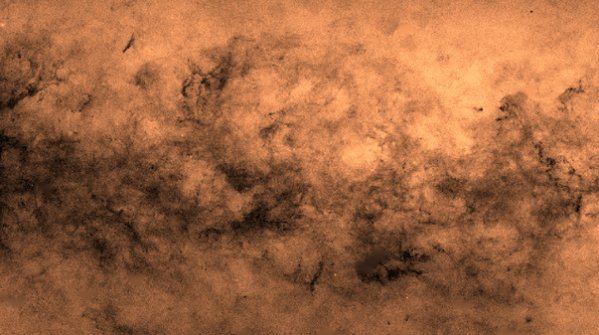
Our home galaxy is called the Milky Way. It spans approximately 100,000 light-years across and contains an impressive 400 BILLION stars; so many that it’s impossible to see and count them all, let alone put all of them into a catalog. However, astronomers from the University of Hertfordshire have spent the last ten, pain-staking years doing just that only on a much smaller scale. The result is pictured here, in this awe-inspiring image:

Seen here is a visible section of sky in the northern part of our galaxy, where no less than 219 million stars reside. As you can see, the view is confounded by the sheer concentration of interstellar dust localized within this particular patch of sky (as a fun-aside, all of this dust, especially how it appears in our night sky, is what gives the Milky Way its name).
Per the press release:
“The axes show galactic latitude and longitude, coordinates that relate to the position of the centre of the galaxy. The mapped data are the counts of stars detected in i, the longer (redder) wavelength broad band of the survey, down to a faint limit of 19th magnitude. Although this is just a small section of the full map, it portrays in exquisite detail the complex patterns of obscuration due to interstellar dust.”
[Reference: University of Hertfordshire.]
The astronomers were able to compile the data used to piece together this image with the Isaac Newton Telescope (INT) in La Palma (in the Canary Islands). Its specialized tools give us the ability to peer through the dusty veil and resolve pretty much every single star within the frame (excluding those that shine from less than a 20th magnitude, but to offer some perspective on the issue, stars within this range of luminosity are about a million times fainter than those that can be seen with the naked eye).

“Using the catalog, the scientists have put together an extraordinarily detailed map of the disk of the Galaxy that shows how the density of stars varies, giving them a new and vivid insight into the structure of this vast system of stars, gas and dust,” said the team.
Notably, this disk not only holds the densest concentration of dust in the Milky Way and the bulk of its stars, but the Sun as well.
See a high-resolution image here.